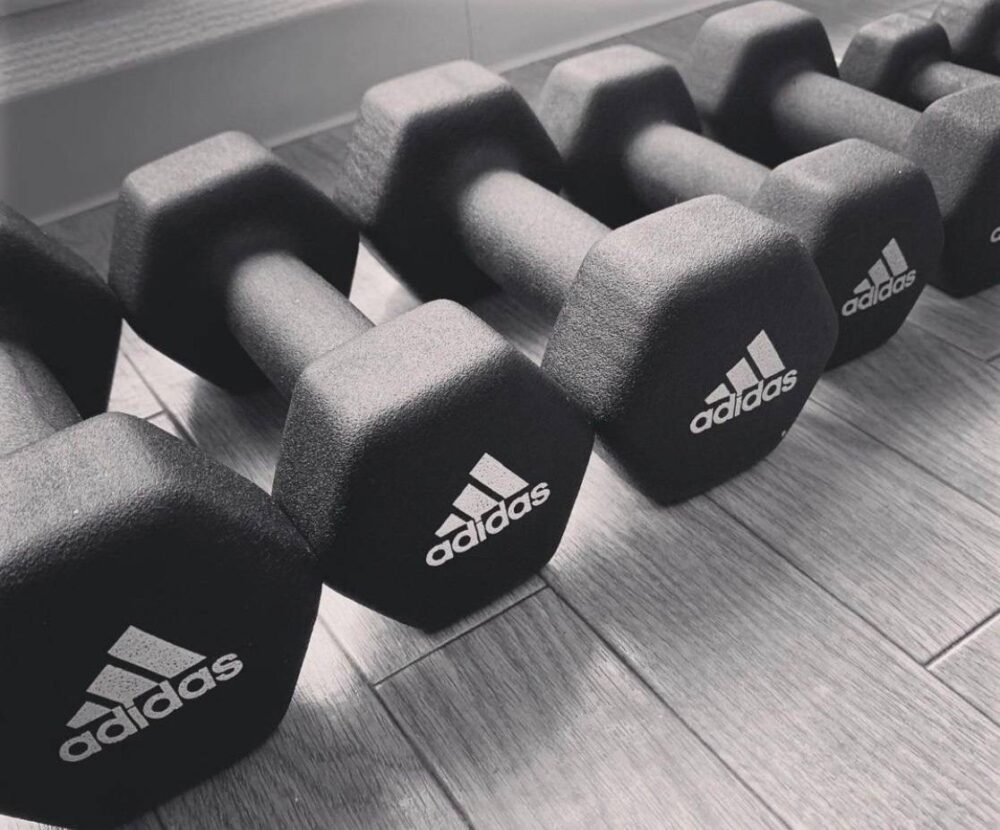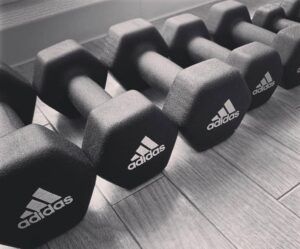こんにちは!大阪梅田のパーソナル加圧トレーニング&丹田スタジオHearts227、代表トレーナーの戸村能久です。
「ダイエットを頑張っているのに、なぜか痩せない…」
「食事制限をしているのに、体重が落ちても体型が崩れてきた…」
「すぐにリバウンドしてしまう…」
このような悩みを抱えて、私のスタジオ(Hearts227)の扉を叩く方は少なくありません。パーソナルトレーナーとして多くの方の体づくりをサポートしてきた経験から断言できることがあります。それは、多くの方が「タンパク質の本当の重要性」と「その賢い摂取方法」を見落としているということです。
この記事では、なぜダイエットにタンパク質が不可欠なのか、そして多くの方が陥りがちな「肉と魚だけ」という思い込みを覆す、賢いタンパク質の摂取法について徹底的に解説します。さらに、摂取したタンパク質を最大限に活かすためのHearts227独自のメソッド、「丹田」を意識した加圧トレーニングの秘密もご紹介します。
この記事を読み終える頃には、あなたのダイエットに関する「常識」が変わり、明日から何をすべきかが明確になっているはずです。

なぜダイエットに「タンパク質」が不可欠なのか? ~基礎代謝の真実~
まず結論からお伝えします。ダイエットを成功させ、リバウンドしにくい体を手に入れるためには、タンパク質を十分に摂取し、「基礎代謝」を高めることが絶対条件です。
なぜなら、タンパク質は私たちの筋肉、皮膚、髪、内臓など、体のあらゆる部分を作る主要な材料だからです。特にダイエットにおいて重要なのが「筋肉」との関係です。筋肉は、私たちが何もしていない時でもエネルギーを消費してくれる、いわば「カロリー消費工場」のようなもの。この工場が活発に稼働している状態が「基礎代謝が高い」状態です。
しかし、多くの方がダイエットと称して行う「極端な食事制限」は、この工場を閉鎖に追い込む行為に他なりません。カロリー不足、特にタンパク質が不足すると、体はエネルギーを確保するために、自らの筋肉を分解してしまいます。
私がこれまで見てきたクライアント様の中にも、糖質ゼロや過度なカロリー制限で一時的に体重を落としたものの、筋肉量が激減し、結果として「痩せた」というより「やつれた」印象になり、さらに「以前より太りやすい体質」になってしまった方が大勢いらっしゃいました。
だからこそ、美しく健康的に痩せるためには、筋肉の材料であるタンパク質をしっかり確保し、基礎代謝を維持・向上させることが何よりも重要なのです。
毎食「20~30g」が理想!しかし、その「摂り方」が問題だ
では、どれくらいのタンパク質を摂れば良いのでしょうか。
一つの目安として、ダイエット中であっても「毎食20~30g」のタンパク質を摂取することを私は推奨しています。
この数字を聞いて、「それなら毎食、肉か魚を食べればいいんでしょう?」と考える方が非常に多いです。確かに、肉や魚は素晴らしいタンパク質源です。例えば、鶏むね肉100gで約22g、鮭1切れ(約100g)で約20gのタンパク質が摂れます。
しかし、タンパク質の摂取源を「肉と魚だけ」に頼ってしまうと、いくつかの大きな壁にぶつかります。 これが、ダイエットが停滞する大きな落とし穴なのです。
その理由は主に2つあります。
- 脂質の過剰摂取: 肉の種類(特にバラ肉や霜降り肉)や調理法(揚げ物や炒め物)によっては、タンパク質と同時に大量の脂質も摂取してしまい、結果的にカロリーオーバーになりがちです。
- 継続の困難さ: 毎食、肉や魚を調理し、準備するのは想像以上に大変です。食費もかさみますし、何より食事が単調になり、「ダイエット=我慢」という意識が強くなり、継続が難しくなります。
私がサポートしているクライアント様からも、「毎日鶏むね肉ばかりで飽きてしまった」「外食になると食べられるものがなくて困る」といった声をよく聞きます。
タンパク質は重要ですが、その摂取方法が現実的でなければ意味がありません。継続できなければ、体は変わらないのです。
【トレーナー推奨】肉・魚“以外”で賢く摂る「補欠じゃない」タンパク質源
そこでお待たせしました。今回の記事の最大のポイントです。
毎食20~30gのタンパク質目標を達成するために、肉や魚“以外”の食材を「主役級」として積極的に活用しましょう。
これらの食材は、肉や魚に比べて「補欠」や「脇役」だと思われがちですが、とんでもない誤解です。これらは非常に優秀なタンパク質源であり、肉・魚にはないメリット(低脂質、食物繊維、特定の栄養素など)も豊富に含んでいます。
なぜなら、これらの食材は「手軽さ」「コスト」「栄養バランス」の三拍子が揃っているからです。これらを組み合わせることで、あなたは「我慢」から解放され、楽しみながらタンパク質摂取を習慣化できます。
具体的に、私がクライアント様にいつもお勧めしている「肉・魚以外の優秀タンパク質源リスト」を紹介します。これはHearts227の食事指導の基本でもあります。
1. 大豆製品(植物性タンパク質の王様)
日本の食卓に欠かせない大豆製品は、低脂質で良質なタンパク質の宝庫です。
- 納豆(1パック): 約7g
- 戸村メモ: 発酵食品であり、腸内環境を整える「菌活」にもなる最強の食材です。私はキムチやオクラと混ぜるのをお勧めしています。
- 豆腐(1/3丁・約100g): 約7g
- 戸村メモ: 絹ごしより木綿の方がタンパク質は多めです。冷奴だけでなく、麻婆豆腐や豆腐ハンバーグなど、かさ増し食材としても大活躍します。
- 豆乳(無調整 200ml): 約7g
- 戸村メモ: プロテインを割るのに使ったり、スープのベースにしたりと万能です。
- その他: 油揚げ、厚揚げ、きな粉なども優秀です。
2. 卵(完全栄養食)
- 卵(1個): 約7g
- 戸村メモ: タンパク質だけでなく、ビタミンやミネラルも豊富。調理法も「茹でる」「焼く」「生」と自由自在。これほどコストパフォーマンスの高い食材は他にありません。コレステロールを気にする方もいますが、近年の研究では食事からの影響は限定的とされており、健康な方なら1日2~3個は全く問題ありません。
3. 乳製品(手軽さNo.1)
- 無糖ヨーグルト(150g): 約7g
- 戸村メモ: ギリシャヨーグルト(パルテノなど)であれば、さらに高タンパク(1個で10g超)です。朝食やおやつに最適です。
- チーズ(プロセスチーズ 2切れ): 約7g
- 戸村メモ: 脂質はやや高めですが、満足感が高く、間食にピッタリです。カッテージチーズは特に低脂質・高タンパクでお勧めです。
【実践】組み合わせで毎食20gをクリアしよう!
これらの食材のタンパク質量(約7gが多いですね)を見て、ピンと来た方もいるかもしれません。
そうです。これらを「3つ」組み合わせれば、それだけで約21gのタンパク質が摂れるのです。
例えば、朝食をイメージしてください。
「ご飯、納豆(7g)、生卵(7g)、無糖ヨーグルト(7g)」
これだけで、合計21gです。ここに鮭の塩焼き(約20g)があれば完璧ですが、もし肉や魚がなくても、最低限の目標はクリアできていますよね?
- 朝食例: 納豆卵かけご飯、豆腐とワカメの味噌汁、ヨーグルト(約21g)
- 昼食例(コンビニ): ざる蕎麦、ゆで卵、豆乳(約20g)
- 夕食例: 鶏むね肉のソテー(100gで約22g)、冷奴(7g)(合計29g)
どうでしょうか。このように肉・魚「以外」の食材をレギュラーメンバーとして組み込むことで、毎食20~30gのタンパク質摂取は、驚くほど簡単で、バリエーション豊かになります。
これらの手軽な食材を賢く組み合わせることが、無理なくダイエットを継続させ、基礎代謝の高い「痩せ体質」を作るための現実的な答えなのです。
タンパク質を「活かす」体へ!加圧トレーニングと丹田の相乗効果
さて、ここまで「食事(タンパク質)」の話をしてきました。しかし、いくら良質な材料(タンパク質)を体に入れても、それを使って「家(筋肉)」を建てる「職人(体の機能)」がサボっていては、効率よく筋肉は作られません。
摂取したタンパク質を効率よく筋肉に変え、基礎代謝を本気で上げるためには、適切な「刺激(トレーニング)」と「体の使い方(意識)」が不可欠です。
ここで、私の専門分野である「加圧トレーニング」と「丹田」の出番です。
なぜなら、Hearts227が提供する加圧トレーニングは、他のトレーニングとは一線を画す「効率性」を持っているからです。加圧トレーニングは、腕や脚の付け根に専用のベルトを巻き、適切に血流を制限した状態で行います。これにより、非常に軽い負荷(ダンベルを持たなくてもOKなレベル)でも、重いウェイトトレーニングを行った際と同様の「成長ホルモン」の分泌が促されることが最大の特徴です。
成長ホルモンは「若返りホルモン」とも呼ばれ、筋肉の合成を促進し、体脂肪の分解をサポートします。つまり、短時間・低負荷で、摂取したタンパク質を筋肉に変えるスイッチを強力に押すことができるのです。重いものが持てない女性や、運動が苦手な方、シニアの方でも安全かつ効果的に筋肉量を増やせるのが、加圧トレーニングの最大の強みです。
さらに、Hearts227では、この加圧トレーニングに**「丹田(たんでん)」への意識**を組み合わせています。
丹田とは、おへその下あたりにある、体の中心でありエネルギーの源とされる場所です。しかし、これを単なるスピリチュアルなものとして捉えてはいけません。解剖学的に言えば、丹田を意識することは「体幹(インナーマッスル)を正しく使う」ことと直結します。
私が指導する際、クライアント様には常に「丹田で呼吸する」「丹田から動く」ことをお伝えしています。丹田を意識してトレーニングを行うと、体の軸が安定し、末端の手足ではなく、体の中心部から力を発揮できるようになります。これにより、トレーニングの質が劇的に向上し、特定の部位に無駄な負担がかかるのを防ぎます。
例えば、スクワット一つとっても、丹田が抜けていると膝や腰を痛めがちですが、丹田を意識するとお尻や太ももといった狙った筋肉に的確に刺激が入ります。
加圧トレーニングで「成長ホルモン」を分泌させ、丹田の意識で「体の使い方」をマスターする。この2つのアプローチが組み合わさることで、あなたが賢く摂取したタンパク質は、無駄なく「使える筋肉」へと変わり、基礎代謝が飛躍的に高まるのです。
あなたの「なぜ痩せない?」に答えるQ&A
ここでは、スタジオでクライアント様からよく寄せられる、タンパク質とダイエットに関する疑問について、私、戸村がお答えします。
Q1. プロテインパウダーは飲んだ方がいいですか?
A1. 非常に有効な選択肢です。
毎食20~30gを食事だけで摂るのが難しい日(特に忙しい朝や、外食が続いた時)は、プロテインパウダーで補うことを強くお勧めします。特に、加圧トレーニング直後は、体が栄養を最も吸収しやすい「ゴールデンタイム」です。このタイミングで摂取すると、タンパク質が効率よく筋肉の修復と合成に使われます。
ただし、注意点として、プロテインはあくまで「補助食品」です。基本は「固形物(食事)」から摂ることを最優先にしてください。なぜなら、食事にはタンパク質以外のビタミンやミネラル、食物繊維など、体を整えるために必要な栄養素が豊富に含まれているからです。
Q2. 糖質はやっぱり抜かないとダメですか?
A2. いいえ、極端な糖質制限(ゼロ)はお勧めしません。
糖質は体を動かすための主要なエネルギー源です。糖質が極端に不足すると、体はエネルギーを生み出すために、せっかく摂取したタンパク質や、今ある筋肉を分解してしまいます。これでは本末転倒ですよね。
大切なのは「量」と「質」です。タンパク質を毎食20g軸にしながら、エネルギー源として良質な糖質(玄米、オートミール、全粒粉パン、蕎麦など)も「適量」摂ることが、筋肉を維持しながら脂肪を燃やす「痩せ体質」の鍵です。
Q3. タンパク質を摂りすぎると太りませんか?
A3. タンパク質もカロリーがある以上、摂りすぎれば太る可能性はあります。
しかし、タンパク質は糖質や脂質に比べ、「食事誘発性熱産生(DIT)」といって、消化・吸収する過程で消費されるエネルギーが最も高い栄養素です。つまり、食べた分がそのまま脂肪になりにくい性質を持っています。
先ほどお伝えした「毎食20~30g」という量は、多くの場合、通常の食事の範囲内です。肉や魚、大豆製品、卵などをバランスよく食べている限り、過剰摂取を心配する必要はほとんどありません。むしろ、現代の食生活では「不足」している人の方が圧倒的に多いのが実情です。
結論:ダイエットの常識を変える「食事」と「運動」の新しいカタチ
今回は、ダイエット成功の鍵を握るタンパク質について、特に「肉・魚“以外”」の食材の重要性について詳しく解説しました。
ポイントを再確認しましょう。
ダイエットを成功させ、基礎代謝の高いリバウンドしにくい体を作るためには、まず「食事」を変える必要があります。それは、毎食20~30gのタンパク質を、「肉・魚」だけに頼らず、「大豆製品・卵・乳製品」などを組み合わせて賢く、そして継続的に摂取することです。
そして、その摂取したタンパク質を最大限に活かし、効率よく「使える筋肉」に変えるために、「運動」の質を高めることが必要です。Hearts227が提供する「加圧トレーニング」は、短時間で成長ホルモンの分泌を促し、さらに「丹田」を意識することで、あなたの体の使い方を根本から変え、トレーニング効果を最大化させます。
食事(材料)と運動(職人)は、どちらが欠けても理想の体という家は建ちません。
もしあなたが、「今度こそ本気で体を変えたい」「自己流のダイエットに疲れてしまった」「健康的に美しく引き締めたい」と心から願うなら、ぜひ一度、Hearts227のパーソナルトレーニングを体験しに来てください。
あなた専用の「食事プラン」と「丹田加圧トレーニング」で、私が責任を持って、あなたの「理想の体」への最短ルートをナビゲートします。
パーソナル加圧トレーニング&丹田(たんでん)波動整体スタジオHearts227-ハーツニニナナ-大阪梅田店
キャンペーン
■体験トレーニング5000円Instagram、公式LINE登録で⇒3000円
■入会金⇒0円
御堂筋線中津駅徒歩1分、
阪急大阪梅田駅茶屋町口徒歩5分、
JR大阪駅徒歩9分
〒531-0072 大阪府大阪市北区豊崎5丁目7−11 アベニュー中津 403号室
営業時間 10:00~22:00
(LAST 21:00)
予約ホーム(https://share.google/G8r7x8Z1hsMsN0vAB)
[Trainer’s Guide] The Secret to Diet Success Lies “Beyond Meat & Fish”! How to Smartly Consume Protein to Boost Your Metabolism and the Synergy of “Tanden Kaatsu”
Hello! This is Norihisa Tomura, representative trainer at Hearts227, a Personal Kaatsu Training & Tanden Studio in Umeda, Osaka.
“I’m trying so hard to diet, but I’m not losing weight…”
“I’m restricting my meals, but even if the number on the scale goes down, my body shape is getting worse…”
“I always rebound quickly…”
Many people come to my studio (Hearts227) with these exact concerns. Based on my experience supporting countless individuals in their body transformation journeys, I can say one thing with certainty: Most people overlook the “true importance of protein” and the “smartest ways to consume it.”
In this article, I will thoroughly explain—using the PREP method (Point-Reason-Example-Point)—why protein is essential for dieting and how to overturn the common misconception of “just eating meat and fish” by adopting smarter protein intake habits. Furthermore, I will reveal the secret of Hearts227’s unique method, Kaatsu (BFR) training combined with “Tanden” awareness, to maximize the protein you consume.
By the time you finish reading this, your “common knowledge” about dieting will be transformed, and you will have a clear understanding of what you need to do starting tomorrow.
Why is Protein Indispensable for Dieting? The Truth About Basal Metabolism
Let me start with the conclusion. To succeed in your diet and achieve a body that resists rebounding, consuming adequate protein to boost your “basal metabolism” is an absolute requirement.
This is because protein is the primary building material for every part of our body—our muscles, skin, hair, and internal organs. Its relationship with “muscle” is particularly crucial for dieting. Muscles are like “calorie-burning factories” that consume energy even when we are doing nothing. A state where these factories are operating actively is what we call having a “high basal metabolism.”
However, the “extreme dietary restrictions” many people undertake in the name of dieting are an act that forces these factories to shut down. When the body is deficient in calories, especially protein, it begins to break down its own muscle tissue to secure energy.
[Image: Diagram showing muscle loss leading to a decrease in basal metabolism]
Among the clients I have worked with, many temporarily lost weight through zero-carb or severe calorie-restricted diets. However, they lost a significant amount of muscle mass, resulting in a “gaunt” rather than “fit” appearance. Worse, they developed a constitution that made them “gain weight more easily than before.”
That is why, to lose weight beautifully and healthily, securing protein—the building block of muscle—is paramount to maintaining and increasing your basal metabolism.
The Ideal is “20-30g” Per Meal! But “How” You Get It is the Problem
So, how much protein should you consume?
As a guideline, I recommend consuming “20-30g of protein at every meal,” even when dieting.
Hearing this figure, many people immediately think, “Okay, so I just need to eat meat or fish at every meal, right?” Indeed, meat and fish are excellent sources of protein. For example, 100g of chicken breast contains about 22g of protein, and a 100g fillet of salmon has about 20g.
However, if you rely solely on “meat and fish” for your protein intake, you will hit several major walls. This is a significant pitfall that causes diets to stagnate.
There are two main reasons for this:
- Excessive Fat Intake: Depending on the cut of meat (especially fatty cuts like ribs or marbled beef) and the cooking method (frying or sautéing), you can end up consuming a large amount of fat along with the protein, leading to a calorie surplus.
- Difficulty in Sustaining: Preparing and cooking meat or fish for every single meal is more challenging than it sounds. It can be expensive, and more importantly, meals become monotonous. This reinforces the “diet = deprivation” mindset, making it difficult to continue.
[Image: A comparison between a large plate of steak and a balanced Japanese meal (tofu, natto, grilled fish)]
I often hear from my clients, “I’m so tired of eating chicken breast every day,” or “I struggle to find anything I can eat when I dine out.”
Protein is vital, but its intake method is meaningless if it isn’t practical. If you can’t sustain it, your body won’t change.
[Trainer Recommended] Smart “Non-Substitute” Protein Sources Beyond Meat & Fish
Now, we’ve arrived at the most important point of this article.
To achieve the 20-30g protein target at every meal, let’s actively utilize ingredients other than meat and fish as “main players.”
These ingredients are often considered “substitutes” or “sidekicks” to meat and fish, but that is a huge misunderstanding. They are excellent protein sources in their own right and offer benefits that meat and fish lack (such as being low-fat, high in fiber, or containing specific nutrients).
The reason is that these ingredients perfectly balance the “three Cs”: Convenience, Cost, and Complete Nutrition (balance). By combining them, you can free yourself from the “deprivation” mindset and turn protein intake into an enjoyable habit.
Here is the “Excellent Protein Source List (Beyond Meat & Fish)” that I always recommend to my clients. This is the foundation of the nutritional guidance at Hearts227.
1. Soy Products (The King of Plant-Based Protein)
A staple of the Japanese diet, soy products are a treasure trove of high-quality, low-fat protein.
- Natto (1 pack): Approx. 7g
- Tomura’s Memo: As a fermented food, this is a “superfood” that also helps regulate your gut environment. I recommend mixing it with kimchi or okra.
- Tofu (1/3 block, approx. 100g): Approx. 7g
- Tomura’s Memo: Firm (Momen) tofu generally has more protein than silken (Kinu). Don’t just eat it cold (Hiyayakko); it’s fantastic in Mapo Tofu or as a “filler” in tofu burgers.
- Unsweetened Soy Milk (200ml): Approx. 7g
- Tomura’s Memo: Versatile for mixing protein shakes or as a base for soups.
- Others: Aburaage (fried tofu pouches), Atsuage (thick fried tofu), and Kinako (roasted soy flour) are also excellent.
2. Eggs (The “Perfect” Food)
- Egg (1 large): Approx. 7g
- Tomura’s Memo: Eggs are packed not only with protein but also with vitamins and minerals. They are incredibly versatile: boiled, fried, or raw. You can’t find a more cost-effective food. While some worry about cholesterol, recent studies show that dietary cholesterol has a limited impact on blood cholesterol. For healthy individuals, 2-3 eggs a day is perfectly fine.
3. Dairy Products (The Ultimate in Convenience)
- Unsweetened Yogurt (150g): Approx. 7g
- Tomura’s Memo: Greek yogurt (like Oikos or Fage) is even higher in protein (often over 10g per serving). Ideal for breakfast or a snack.
- Cheese (2 slices processed cheese): Approx. 7g
- Tomura’s Memo: While slightly higher in fat, cheese is very satisfying and perfect for a snack. Cottage cheese is particularly recommended as it is low-fat and high-protein.
[In Practice] Combine to Clear 20g Every Meal!
Looking at the protein content of these items (many are around 7g), you might have noticed a pattern.
That’s right. If you combine “three” of these items, you get approximately 21g of protein.
For example, picture your breakfast:
“Rice, Natto (7g), a raw Egg (7g), and Unsweetened Yogurt (7g).”
Just like that, you have 21g total. It would be perfect if you added a piece of grilled salmon (approx. 20g), but even without meat or fish, you’ve cleared the minimum target, haven’t you?
- Breakfast Example: Natto and egg over rice, miso soup with tofu and seaweed, yogurt (Approx. 21g)
- Lunch Example (at a convenience store): Zaru Soba (buckwheat noodles), a boiled egg, soy milk (Approx. 20g)
- Dinner Example: Sautéed chicken breast (22g per 100g), a side of cold tofu (7g) (Total 29g)
How does that sound? By incorporating these “beyond meat and fish” ingredients as regular members of your meals, achieving 20-30g of protein at every meal becomes surprisingly easy and full of variety.
Smartly combining these convenient ingredients is the realistic answer to sustaining your diet without deprivation and building a “lean physique” with a high metabolism.
Activating Your Protein: The Synergy of Kaatsu Training and Tanden
So far, we’ve discussed “diet (protein).” However, no matter how much high-quality material (protein) you put into your body, if the “workers (body’s functions)” responsible for building the “house (muscle)” are lazy, the muscle won’t be built efficiently.
To efficiently convert the protein you consume into muscle and truly boost your basal metabolism, you need the right “stimulation (training)” and “body awareness (consciousness).”
This is where my areas of expertise, “Kaatsu Training” and “Tanden,” come into play.
The Kaatsu (BFR – Blood Flow Restriction) training we offer at Hearts227 is in a class of its own regarding “efficiency.” Kaatsu training is performed while wearing specialized belts around the base of the arms or legs to appropriately restrict blood flow. Its greatest feature is that it stimulates a massive release of “Growth Hormone,” similar to high-intensity weightlifting, but with extremely light loads (even bodyweight exercises are effective).
[Image: Trainer Tomura guiding a client who is wearing Kaatsu belts on their arms]
Growth Hormone, also known as the “rejuvenation hormone,” promotes muscle synthesis and supports the breakdown of body fat. In other words, Kaatsu training powerfully flips the switch that turns the protein you ate into muscle, all in a short time with low impact. Its greatest strength is that it allows anyone—women who can’t lift heavy weights, people who dislike exercise, or seniors—to build muscle mass safely and effectively.
Furthermore, at Hearts227, we integrate awareness of the “Tanden” into this Kaatsu training.
The Tanden is a spot below the navel, considered the body’s center and source of energy. However, you shouldn’t think of this as purely spiritual. Anatomically, being aware of the Tanden is directly linked to “correctly using your core (inner muscles).”
When I’m coaching, I constantly remind my clients to “breathe from the Tanden” and “move from the Tanden.” When you train with Tanden awareness, your body’s axis stabilizes, allowing you to generate power from your core rather than just your limbs. This dramatically improves the quality of your training and prevents unnecessary strain on specific body parts.
[Image: A scene in the studio, guiding a client through breathing or posture focusing on the Tanden]
Take a simple squat, for example. If your Tanden awareness is “off,” you’re likely to hurt your knees or lower back. But when you engage your Tanden, the stimulation goes directly to the target muscles, like your glutes and thighs.
Stimulating “Growth Hormone” with Kaatsu training and mastering “how to use your body” with Tanden awareness. When these two approaches combine, the protein you’ve smartly consumed is efficiently converted into “functional muscle,” leading to a dramatic increase in your basal metabolism.
Answering Your “Why Can’t I Lose Weight?” Q&A
Here, I, Tomura, will answer common questions about protein and dieting that I often hear from clients at the studio.
Q1. Should I drink protein powder?
A1. It is a very effective option.
On days when it’s difficult to get 20-30g from meals alone (especially busy mornings or when eating out), I strongly recommend supplementing with protein powder. In particular, the period immediately after Kaatsu training is the “golden time” when your body is most receptive to nutrients. Consuming it at this timing ensures the protein is used efficiently for muscle repair and synthesis.
However, a word of caution: protein powder is, after all, a “supplement.” Your first priority should always be getting nutrients from “whole foods (meals).” This is because meals contain many other essential nutrients for regulating the body, such as vitamins, minerals, and fiber, which protein powder lacks.
Q2. Do I really have to cut out carbs?
A2. No, I do not recommend extreme carbohydrate restriction (zero carbs).
Carbohydrates are the primary source of energy for moving your body. If you are severely carb-deficient, your body will start breaking down the protein you’ve consumed—or worse, your existing muscle—to create energy. This completely defeats the purpose.
What’s important is “quantity” and “quality.” While keeping your protein intake at 20g per meal as your axis, consuming a “moderate amount” of high-quality carbs (like brown rice, oatmeal, whole-wheat bread, or soba) is the key to a “lean physique” that burns fat while preserving muscle.
Q3. Won’t I get fat if I eat too much protein?
A3. Since protein also has calories, it is possible to gain weight if you eat too much of it.
However, compared to carbs and fats, protein has the highest “Thermic Effect of Food (TEF).” This means it requires the most energy to digest and absorb. In short, it’s less likely to be stored as fat compared to other macronutrients.
The amount I mentioned, “20-30g per meal,” is, in most cases, well within the range of a normal diet. As long as you are eating a balanced mix of meat, fish, soy products, eggs, and dairy, you almost never need to worry about overconsumption. In fact, the reality of modern diets is that far more people are “deficient” in protein.
Conclusion: A New Form of “Diet” and “Exercise” That Changes Everything
In this article, we’ve deeply explored protein, the key to successful dieting, with a special focus on the importance of “beyond meat and fish” ingredients.
Let’s re-confirm the key points.
To succeed in your diet and build a rebound-resistant body with a high basal metabolism, you must first change your “diet.” This means consuming 20-30g of protein at every meal, not by relying solely on “meat and fish,” but by smartly and sustainably combining “soy products, eggs, and dairy.”
And, to maximize the protein you consume and efficiently build “functional muscle,” you must improve the quality of your “exercise.” The “Kaatsu Training” offered by Hearts227 stimulates growth hormone in a short time, and by adding “Tanden” awareness, it fundamentally changes how you use your body, maximizing your training results.
Diet (the materials) and exercise (the workers) are both essential; you cannot build your ideal body (the house) if one is missing.
If you truly wish, “I want to seriously change my body this time,” “I’m tired of dieting on my own,” or “I want to get lean beautifully and healthily,” then please come and experience a trial session at Hearts227.
With a personalized “nutrition plan” and “Tanden Kaatsu Training,” I will personally navigate you on the shortest path to your “ideal body.”



